Download EPC 800 USB - HEKA Elektronik Dr. Schulze GmbH
Transcript
Electrophysiology Electrochemistry EPC 800 USB Patch Clamp Amplifier If you believe your job is to make new discoveries... …discover the EPC 800: • Patch clamp amplifier with manual or computer controlled operation via USB • Can be used with any data acquisition interface with compatible acquisition soft- ware • Low noise headstage optimized for single channel & whole-cell recordings • True current clamp mode for fast AP recordings • Automatic or manual capacitance compensation HEKA provides the finest instruments today to achieve the needed progress of tomorrow… 1 EPC 800 Patch Clamp Amplifier For any researcher who desires manual user control through knobs and dials, while at the same time, longs for some degree of computer communication and automatic control, HEKA is excited to release the EPC 800 USB. This amplifier is truly a unique hybrid patch-clamp amplifier with its design and feature-set primarily based upon the manually controlled EPC 8. The EPC 800 USB is the most flexible patch clamp amplifier HEKA has ever produced in that it is a stand-alone amplifier that can be combined with any existing AD/DA interface and its compatible acquisition software. Improvements in comparison to the EPC 8: • Telegraphing outputs for Gain, Bandwidth, Mode & C-Slow • Automatic Vp-Offset, C-Fast & C-Slow compensation with the simple push of a button • Improved current monitor filters • USB 2.0 communication for software control of all amplifier functions • Low Frequency Voltage Clamp Mode (LFVC) • CC+Bridge Mode • Improved RS Comp Ranges 2 Electrophysiology Features Operating Modes of the EPC 800 USB The EPC 800 USB can be operated in three modes: Local, Local + Telegraphing and Remote. The decision of which mode to use not only depends on user preference of whether or not to have the functionality to turn knobs and switches, but also on what data acquisition software and interface the EPC-800 USB is used with. 1. Local: • Manual control by use of the knobs and switches on the front panel. • Vp-Offset, C-Fast and C-Slow compensation can be performed manually or automatically with the push of a button. • Amplifier can be used with ANY data acquisition interface and its compatible software. 2. Local + Telegraphing: • Telegraphing outputs on the rear panel for Gain, Filter Bandwidth, Mode and C-Slow. Telegraphing features can be utilized by use with ANY AD/DA interface having telegraphing inputs. • Amplifier remains under manual control with use of the knobs and switches on the front panel. • Ability to perform automatic adjustments of Vp-Offset, C-Fast and C-Slow compensations are still possible. 3. Remote: • Commands are sent and received through USB 2.0 communication. • The EPC 800 USB commands are open source and users are free to write their own interfacing to the device. • HEKA offers a dynamic link library (DLL) providing direct access to the amplifier and HEKA data acquisition interfaces. • HEKA’s PATCHMASTER software supports all amplifier functionality in remote mode. • Amplifier can also be used with HEKA’s EPCMASTER software in combination with custom software or third-party software with the appropriate interface. • Front panel knobs and switches of the amplifier are inactive, with the exception of the LCD multi-position switch. 3 EPC 800 Patch Clamp Amplifier Acquisition Software Options 1. Clampex software: The EPC 800 USB can be used with pCLAMP / Clampex software. Using pCLAMP requires the use of one of the series of Digidata interfaces. Use with older models such as the 1200 require the amplifier to be used in local mode. Use with more recent models such as the Digidata 1440A, that are equipped with telegraphing inputs, enable the EPC 800 USB to be used in a local + telegraphing mode. In this situation, the filter, gain and C-Slow values are telegraphed and displayed within Clampex. In local or local + telegraphing modes, the automatic C-Fast and C-Slow compensations features of the EPC 800 USB can be utilized. These are performed manually through the front panel and the results clearly illustrated in the Membrane Test panel of Clampex. 2. PATCHMASTER software: HEKA’s PATCHMASTER software fully supports the EPC 800 USB in both local and remote modes of operation on either Windows (7, 2000, XP and VISTA) or Mac OS X operating systems. When using PATCHMASTER, the amplifier can be combined with any one of the HEKA / InstruTECH series of interfaces (ITC-16, ITC-18, ITC-1600, LIH-1600, LIH 8+8). When configured in Local mode, the amplifier operates manually with the front panel knobs and switches of the EPC 800 USB all active. As controls are changed, the same values that are displayed on the front panel LCD display are read and displayed in the PATCHMASTER amplifier window. 4 Electrophysiology When in Remote mode, the controls and knobs of the EPC 800 USB are inactive. All amplifier settings, including automatic capacitance compensations, are fully controlled through the software. One of the many powerful features of PATCHMASTER is that it enables automatic control of the amplifier through user-defined protocols. Detailed information regarding PATCHMASTER functionality can be found in the PATCHMASTER brochure and user’s manual. 3. EPCMASTER software HEKA’s EPCMASTER software consists of a virtual front panel of the EPC 800 USB. Although the program has no functions for data acquisition or analysis, it is very useful in that it provides users the option of setting amplifier parameters from a software panel instead of manually using the front panel controls. EPCMASTER is provided free of charge and should be used in conjunction with a custom data acquisition system i.e. IGOR Pro, Labview, pCLAMP, etc. The end result is a software controlled version of the amplifier that is extremely flexible with regard what particular data acquisition interface or software package it is being used with. This flexibility allows users to easily add an EPC 800 USB to their current setups without the need to purchase or learn a new data acquisition package. In this example, EPCMASTER is being used with a Digidata 1440A and Clampex software, the EPC 800 USB is now considered to be operated in remote mode. 4. Custom software The EPC 800 USB is flexible enough so that it can be integrated into customized experimental systems. The amplifier USB commands are open source and users are free to write their own interfacing to the device. HEKA provides a dynamic link library (DLL) which gives access to the amplifier and HEKA data acquisition interfaces. The DLL can be used with most programming languages, such as C, Pascal, Delphi and Visual Basic. 5 EPC 800 Patch Clamp Amplifier Acquisition Modes Three operating modes are provided: Voltage Clamp (VC), Current Clamp+Bridge (CC+Bridge) and Low Frequency Voltage Clamp (LFVC). Voltage Clamp (VC) mode recordings, ideal for recordings from whole-cell, cell-attached, single channel, loose patch or bilayer configurations. The current clamp mode of the EPC 800 USB is called CC + Bridge. Bridge compensation in current clamp mode acts in a similar way as RS compensation does in voltage clamp mode. It can be thought of as an enhanced current clamp mode that fully compensates the voltage drop via the series (access) resistance of the electrode (RS). In this mode, the stimulus artifact that is typically generated when injecting current is fully eliminated. The current clamp circuitry of the EPC 800 USB acts as a voltagefollower, thereby increasing the speed and stability of the circuit. Recording and following rapid events such as fast action potentials (AP) with patch or intracellular electrodes is possible. The “Low Frequency Voltage Clamp” (LFVC) mode is a modified current clamp mode that allows for the measurement of potential deflections such as action potentials or synaptic potentials, while the average potential is kept constant at a value chosen by the user with the LFVCHOLD potentiometer. The circuit thus works like a current clamp for fast signals and like a voltage clamp for low frequency signals. To achieve this, the measured membrane potential is low-pass filtered and compared to the LFVCHOLD potential. Current is injected into the cell to keep the membrane potential at the chosen LFVC potential. There are five time constants (1, 3, 10, 30 and 100) available for the LFVC mode that specifiy the speed of regulation. The feedback speed is highly dependent on the Gain Range settings. C-Fast and C-Slow Compensation Both C-Fast and C-Slow compensation routines can either be performed manually by turning the knobs or automatically by pressing the Auto buttons on the front panel. Both C-Fast and C-Slow compensation can be applied in all three headstage gain ranges. The C-Fast range is 0 to 15 pF in all gain ranges. C-Slow has 30, 100 and 1000 pF ranges. Multi-parameter Display An LCD panel can display the following parameter pairs: I / VMon, C-Fast / τ-fast, C-Slow / R-Series, RS Range / Comp, VP / LFVC, I / VHold, and Noise. The displayed parameters can either be individually selected via a multi-position switch or automatically set. If the Auto display mode is activated, the LCD panel will automatically display the value of the control as its modified by the user. Holding Potentials and VpOffset Ten-turn potentiometers are available on the front panel for VPOFFSET (± 200 mV), VHOLD (± 500 mV), IHOLD (± 50 nA or ± 500 pA) and LFVCHOLD (± 200 mV). VPOffset can be adjusted either manually or automatically by pressing the Auto button. 6 Electrophysiology Technical Specifications General Output Gain Included Accessories EPC 800 USB Headstage: EPC 800 USB Model Circuit: EPC 800 USB Manual: Pipette Holder: USB Cable: Power Cord: 1 1 1 1 1 1 Dimensions Main Unit D x W x H: (31.1 x 48.3 x 14.5) cm / (12.3 x 19 x 5.7) inch Weight Main Unit 11.4 kg (24.8 lbs) (1.5 mm is standard, other diameters available upon request at no additional charge) (3 meter USB 2.0 shielded cable) (2 meter IEC type shielded) Power Supply Power requirements are 125 W. The logic controlled power supply automatically switches the voltage range. Operational range is from 90-130V or 210-250V at line frequencies of 50 or 60 Hz. A shielded transformer minimizes noise pickup from the power line frequencies. Ground Lines Signal ground (GND) is isolated from the chassis by a 10 Ω resistor to avoid ground loops. GND is accessible via a Banana plug on the front panel and also via a connector on the headstage. A Chassis ground (CHAS) is accessible via a Banana plug on the front panel and is connected to the ground line of the power cord. Headstage Dimensions: Resistors: low gain range: medium gain range: high gain range: D x W x H: (90 x 16.9 x 14.3) mm (3.54 x 0.67 x 0.57) inch Three feedback resistors. Gain ranges can be switched during the experiment. 5 MOhm,± 2 μA current range 500 MOhm, ± 20 nA current range 50 GOhm, ± 200 pA current range Bandwidth (max): medium & low ranges: 100 kHz high range: 60 kHz Noise: (measured with an open input, 8-pole Bessel filter and 50 GΩ resistor) DC to 1 kHz < 0.03 pA RMS DC to 3 kHz < 0.08 pA RMS DC to 10 kHz < 0.225 pA RMS Filters The EPC 800 USB has a filter knob on the front panel with settings of 0.1, 0.3, 0.5, 0.7, 1, 3, 5, 7, 10, 30 and 100 kHz. It is an integrated filter comprised of two built-in filters for the current monitor signal. Filter 1 is a 5-pole, 10 to 100 kHz Bessel pre-filter. Filter 2 is a 4-pole, tunable 20 kHz Bessel filter. When the front panel knob is set to either 30 or 100 kHz, filter 2 is bypassed and the signal is straight filter 1. All of the other filter knob settings are filter 1 + filter 2. low gain range: medium gain range: high gain range: 0.005, 0.01, 0.02, 0.05, 0.1, 0.2 mV/pA 0.5, 1, 2, 5, 10, 20 mV/pA 50, 100, 200, 500, 1000, 2000 mV/pA Pipette Offset ± 200 mV (automatic or manual adjustment) Holding Commands Voltage Clamp: ± 500 mV with front panel knob ± 1 V via external Stim Input Current Clamp + Bridge: Low CC Output Gain Range: IHOLD = ± 50 nA IMAX = ± 100 nA (available when switching from VC mode in low gain range) CC Stim Scaling = 10 pA High CC Output Gain Range: IHOLD = ± 500 pA IMAX = ± 1 nA (available when switching from VC mode in either medium or high gain ranges) CC Stim Scaling = 0.1 pA Low Frequency Voltage Clamp (LFVC): ± 200 mV τ of 1, 3, 10, 30 or 100 Capacitance Compensation C-Fast Compensation: 0 ⇔ 15 pF, 0 ⇔ 8 μs tau Automatic or manual compensation in all gain ranges C-Slow Compensation: Automatic or manual compensation in all gain ranges. OFF / 30, 100, 1000 pF switch 30 pF range (1.0 ⇔ 30 pF) 100 pF range (1.0 ⇔ 100 pF) 1000 pF range (1.0 ⇔ 1000 pF) Injection Capacitors: The C-Fast compensation signal is injected via a 1 pF capacitor. The C-Slow compensation signals are injected via a 10 pF capacitor in medium and low gain and via a 1 pF capacitor in high gain range R-Series: 0.1 MΩ ⇔ 200 MΩ (1000 pF range) 1 MΩ ⇔ 200 MΩ (100 pF range) 5 MΩ ⇔ 200 MΩ (30 pF range) Series Resistance Compensation Manual adjustment with range depending on cell capacitance. Equivalent Time Constants: 2 μs / 10 μs / 100 μs Range: 0 ⇔ 95% In current clamp mode: RS Comp serves as Bridge Compen sation with a range of 0 ⇔ 120% Telegraphing Outputs (BNC connections on rear panel) Gain, Filter Bandwidth, Amplifier Mode, C-Slow 7 Electrophysiology HEKA Elektronik Dr. Schulze GmbH Wiesenstraße 71 D-67466 Lambrecht/Pfalz Germany Phone Fax Web Site Email +49 (0) 63 25 / 95 53-0 +49 (0) 63 25 / 95 53-50 http://www.heka.com [email protected] [email protected] HEKA Electronics Incorporated 47 Keddy Bridge Road R.R. #2 Mahone Bay, NS B0J 2E0 Canada Phone Fax Web Site Email +1 902 624 0606 +1 902 624 0310 http://www.heka.com [email protected] [email protected] HEKA Instruments Inc. 2128 Bellmore Avenue Bellmore, New York 11710-5606 USA Phone Fax Web Site Email +1 516 882 1155 +1 516 467 3125 http://www.heka.com [email protected] [email protected] VKRPK1/1 General notice: Product names used herein are for identification purposes only and may be trademarks of their respective owners. HEKA disclaims any and all rights in those marks. 8 Electrochemistry We reserve the right to effect technical changes as development progresses. Special versions are available on request. Further technical data are provided by a detailed description, which is available on request. A guarantee of one year applies on all instruments.








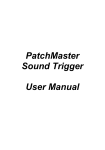

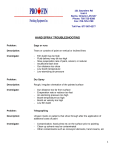
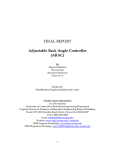

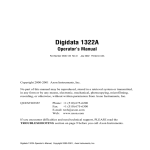
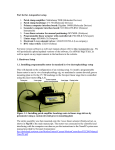
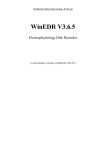
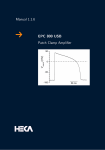
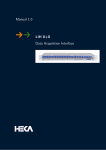

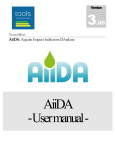
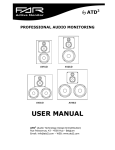
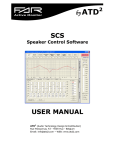


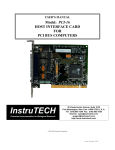

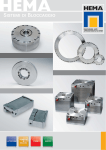

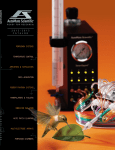
![HEMA_Schrift-Anschnitt [Konvertiert]](http://vs1.manualzilla.com/store/data/006102622_1-2335e6c1d5fc3f6a8f0ec139ee8644f2-150x150.png)